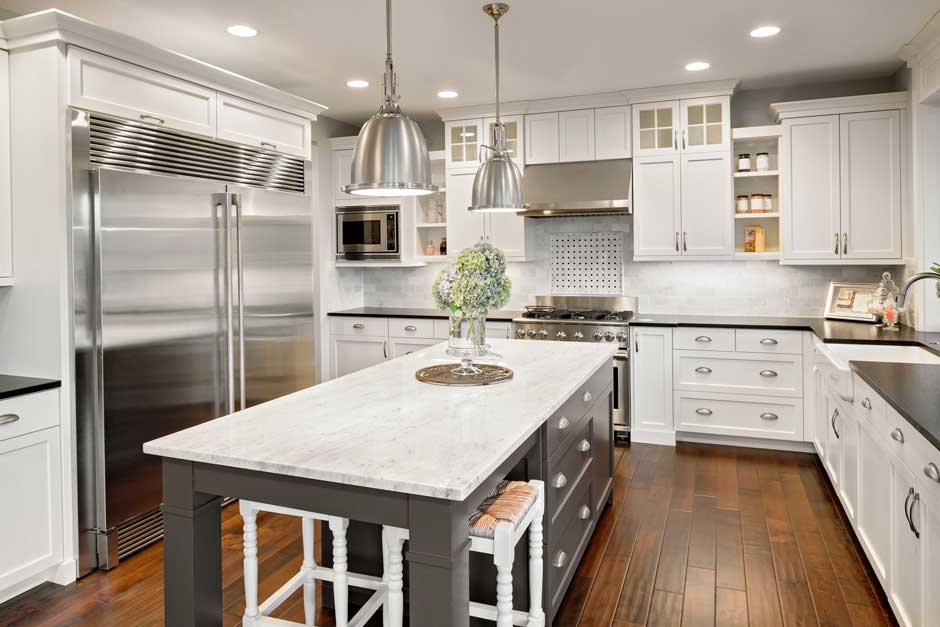Cabinet Maintenance 101: How to Keep Your Kitchen Looking New for Years

Your kitchen is the heart of your home. It’s where meals are made, conversations flow, and memories are created. But even the most beautiful kitchens can start to look tired if your cabinets aren’t properly maintained. Cabinets are not only functional—they define the aesthetic of your kitchen. That’s why understanding essential kitchen cabinet maintenance tips is key to preserving your space’s charm and functionality.
In this comprehensive guide, we’ll cover everything you need to know about cabinet maintenance, from daily cleaning routines to long-term care strategies, so you can keep your kitchen looking pristine for years to come, notes Compass Management experts.
Why Cabinet Maintenance Matters
Cabinets endure daily wear and tear from spills, heat, steam, grease, and constant handling. Without regular care, they can fade, warp, stain, or develop tough-to-remove grime. Proper maintenance not only keeps them looking new but also extends their lifespan, saving you money in the long run.
Whether your cabinets are made of wood, laminate, or metal, these kitchen cabinet maintenance tips will help you maintain both their appearance and function.
-
Daily and Weekly Cleaning Routines
Keeping up with regular cleaning is the first step to preventing long-term damage.
Daily Maintenance Tips
- Wipe spills immediately: Whether it’s water, oil, or sauce, any liquid left to sit can stain or damage the surface.
- Use a microfiber cloth: It’s gentle on finishes and effective in removing dust and fingerprints without scratching.
- Avoid harsh chemicals: Stick to mild dish soap diluted in warm water. Harsh cleaners can strip finishes, especially on wood cabinets.
Weekly Maintenance Tips
- Deep clean handles and edges: These areas collect grime quickly. Use a soft-bristled brush or toothbrush to gently scrub around the hardware.
- Polish wood cabinets: If you have natural wood cabinetry, a weekly polish with a dedicated wood cleaner can help maintain its luster.
-
Seasonal Deep Cleaning
Even if you follow a solid weekly routine, your cabinets will benefit from a quarterly or biannual deep cleaning session.
How to Perform a Deep Clean:
- Empty your cabinets: Remove all items so you can access the full surface area.
- Vacuum crumbs and debris: Use a handheld vacuum to clean out any dry residue.
- Use a vinegar-water solution: For a natural and effective cleaner, mix equal parts of vinegar and water. This solution is great for cutting through grease and disinfecting.
- Clean crevices and corners: Remember the undersides and tops of the cabinets—dust and grease often collect in these overlooked spots.
- Protecting Cabinet Finishes
Your cabinet finish is your first line of defense against damage. Here’s how to protect it:
Wood Cabinets
- Avoid prolonged exposure to sunlight, which can cause fading.
- Maintain humidity levels between 40% and 50% to prevent warping or cracking.
- Use furniture wax or oil every few months to keep the wood hydrated.
Laminate Cabinets
- Never use abrasive scrubbers—they can dull the surface.
- Avoid soaking—laminate can peel if water seeps into edges or seams.
Painted Cabinets
- Touch up chips promptly to prevent paint from flaking.
- Clean gently to preserve the painted finish.
-
Hardware Maintenance
Knobs, handles, hinges, and drawer slides are crucial to cabinet performance and often the first parts to show wear.
Care Tips:
- Tighten screws: Check for loose hardware and tighten them periodically to prevent wobbling.
- Lubricate hinges: A few drops of WD-40 or silicone spray can eliminate squeaks and ensure smooth operation.
- Polish hardware: Use a metal polish or mild cleaner depending on the finish (brass, chrome, stainless steel, etc.) to restore shine.
-
Preventative Measures
Prevention is the best form of maintenance. Small habits can make a big difference in keeping your cabinets looking new.
Best Practices:
- Use cabinet liners: These protect shelves from spills, crumbs, and scratches.
- Install range hoods or fans: Reducing moisture and airborne grease will help keep your cabinets clean.
- Open windows when cooking: Proper ventilation reduces humidity and cooking odors that can cling to cabinet surfaces.
- Avoid slamming doors: Soft-close hinges are a great upgrade if you want to reduce impact damage.
-
Handling Common Issues
Even with the best kitchen cabinet maintenance tips, issues can arise. Here’s how to address a few common ones:
Grease Buildup
Use baking soda paste (baking soda + water) and gently scrub the greasy area. Rinse with a damp cloth.
Water Damage
Blot excess moisture immediately. For warped areas, consider sanding and refinishing if minor, or replacing panels if extensive.
Scratches and Dents
Use wood fillers or touch-up kits that match your cabinet finish. These are especially useful for painted or stained wood.
-
Cabinet Maintenance for Different Materials
Understanding your cabinet material is essential for applying the right kitchen cabinet maintenance tips.
Wood
- Clean with a wood-safe soap and condition regularly.
- Be mindful of temperature and humidity fluctuations.
Thermofoil
- Avoid heat exposure—keep them away from toasters or ovens.
- Use only non-abrasive cleaners.
Glass-Front Cabinets
- Clean glass with vinegar-water solution.
- Use cotton swabs to clean corners and frames.
-
When to Call a Professional
Some problems require professional help:
- Major water damage or mold: If your cabinets are swollen or smell musty, they may need professional restoration.
- Finish refinishing or painting: Professionals can ensure an even, lasting finish that DIY may not match.
- Custom hardware replacement: If parts are outdated or difficult to find, pros may be able to source or fabricate replacements.
Final Thoughts
Caring for your cabinets isn’t just about cleaning—it’s about protecting your investment and ensuring your kitchen stays a place of beauty and function. With these kitchen cabinet maintenance tips, you can keep your space looking new, fresh, and welcoming for years to come.
A little consistency goes a long way. Set a routine, use the right products, and watch for early signs of wear. Your cabinets—and your future self—will thank you.


